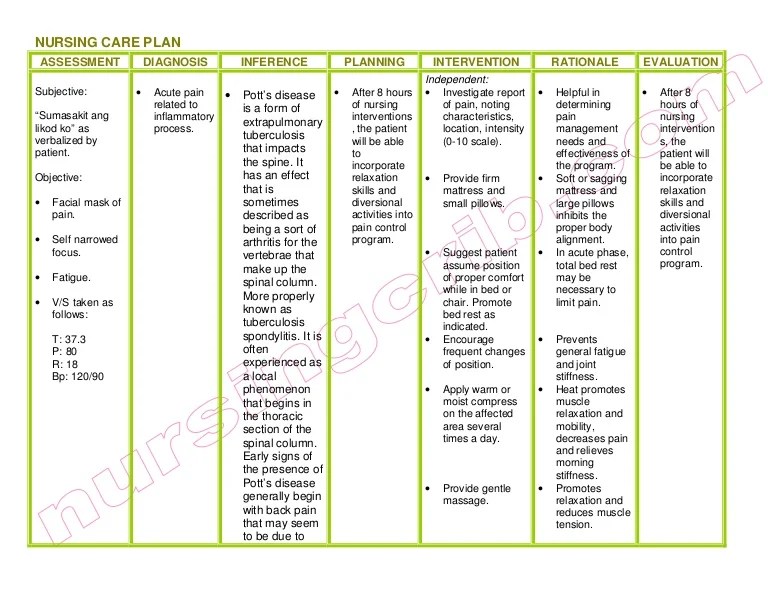Nursing care plan for gallstones, a prevalent condition affecting the gallbladder, plays a crucial role in managing symptoms, preventing complications, and promoting patient well-being. This comprehensive plan Artikels the goals, interventions, and strategies for providing optimal care to patients with gallstones.
The nursing care plan addresses the diverse aspects of gallstone management, encompassing pain management, nutritional management, patient education, and discharge planning. By understanding the underlying pathophysiology, clinical manifestations, and treatment options, nurses can effectively implement evidence-based interventions that enhance patient outcomes.
Introduction

Gallstones are solid deposits that form in the gallbladder, a small organ located under the liver. They are composed of cholesterol, bile pigments, and other substances. Gallstones can vary in size from small grains to large, golf ball-sized masses.
Gallstones are a common problem, affecting approximately 10-15% of the population. They are more prevalent in women, obese individuals, and those with a family history of gallstones.
Symptoms and Complications of Gallstones
Gallstones can cause a variety of symptoms, including:
- Abdominal pain, especially in the upper right quadrant
- Nausea and vomiting
- Indigestion
- Bloating
- Gas
- Jaundice (yellowing of the skin and eyes)
Complications of gallstones can include:
- Cholecystitis (inflammation of the gallbladder)
- Choledocholithiasis (gallstones in the bile duct)
- Pancreatitis (inflammation of the pancreas)
- Gallstone ileus (gallstones blocking the intestine)
Nursing Care Plan
Goals of Nursing Care
The goals of nursing care for patients with gallstones include:
- Relieving pain
- Preventing complications
- Promoting patient education
- Preparing for discharge
Nursing Interventions, Nursing care plan for gallstones
Nursing interventions for each goal include:
- Relieving pain:Administer pain medications, apply heat or cold packs, and provide comfort measures.
- Preventing complications:Monitor for signs and symptoms of complications, such as fever, chills, and abdominal pain.
- Promoting patient education:Teach patients about gallstones, their symptoms, and treatment options.
- Preparing for discharge:Provide discharge instructions, including information on diet, activity, and follow-up care.
Pain Management
Pharmacological Methods
Pharmacological methods of pain management for gallstones include:
- Non-steroidal anti-inflammatory drugs (NSAIDs):NSAIDs, such as ibuprofen and naproxen, can help to reduce pain and inflammation.
- Opioid analgesics:Opioid analgesics, such as morphine and oxycodone, can be used to relieve severe pain.
Non-Pharmacological Methods
Non-pharmacological methods of pain management for gallstones include:
- Heat or cold packs:Applying heat or cold packs to the abdomen can help to relieve pain.
- Massage:Massage can help to relax the muscles and relieve pain.
- Acupuncture:Acupuncture may help to relieve pain by stimulating the release of endorphins.
Administering Pain Medications
When administering pain medications, nurses should follow the following steps:
- Assess the patient’s pain level.
- Choose the appropriate pain medication.
- Administer the medication as prescribed.
- Monitor the patient for side effects.
Nutritional Management
Dietary Recommendations
Dietary recommendations for patients with gallstones include:
- Low-fat diet:A low-fat diet can help to reduce the production of bile, which can help to prevent gallstones from forming.
- High-fiber diet:A high-fiber diet can help to bind bile acids and prevent them from forming gallstones.
- Avoidance of certain foods:Patients with gallstones should avoid foods that are high in fat, cholesterol, and refined carbohydrates.
Creating a Gallstone-Friendly Diet
To create a gallstone-friendly diet, patients should:
- Choose lean protein sources, such as fish, chicken, and beans.
- Eat plenty of fruits and vegetables.
- Choose whole grains over refined grains.
- Limit their intake of saturated and trans fats.
- Avoid sugary drinks and processed foods.
Patient Education

Key Topics
Key topics to cover in patient education for gallstones include:
- Symptoms of gallstones
- Treatment options for gallstones
- Prevention of gallstones
- Follow-up care
Teaching Plan
A teaching plan for patient education on gallstones should include the following:
- Introduction:The nurse should introduce the topic of gallstones and explain the importance of understanding the condition.
- Symptoms:The nurse should discuss the symptoms of gallstones and how to recognize them.
- Treatment options:The nurse should discuss the different treatment options for gallstones, including surgery, medication, and lifestyle changes.
- Prevention:The nurse should discuss ways to prevent gallstones from forming, such as maintaining a healthy weight, eating a healthy diet, and getting regular exercise.
- Follow-up care:The nurse should discuss the importance of follow-up care after treatment for gallstones.
Discharge Planning: Nursing Care Plan For Gallstones
Discharge Instructions
Discharge instructions for patients with gallstones should include:
- Diet:Patients should be instructed to follow a gallstone-friendly diet.
- Activity:Patients should be instructed to avoid strenuous activity.
- Follow-up care:Patients should be instructed to follow up with their doctor as directed.
Potential Complications
Patients should be aware of the potential complications of gallstones, such as:
- Cholecystitis
- Choledocholithiasis
- Pancreatitis
- Gallstone ileus
Case Study
A 65-year-old female presents to the emergency department with severe abdominal pain. She has a history of gallstones and has been experiencing pain for the past several hours. The pain is located in the upper right quadrant of her abdomen and is radiating to her back.
She is also nauseated and vomiting.
The nurse assesses the patient’s pain and determines that it is severe. She administers a pain medication and applies a heat pack to her abdomen. The nurse also monitors the patient for signs and symptoms of complications.
The patient’s pain improves after receiving the pain medication and heat pack. She is discharged home with instructions to follow a gallstone-friendly diet, avoid strenuous activity, and follow up with her doctor as directed.
Questions Often Asked
What are the common symptoms of gallstones?
Gallstones often present with symptoms such as abdominal pain, nausea, vomiting, and indigestion.
How is pain managed in patients with gallstones?
Pain management strategies include pharmacological interventions (e.g., analgesics) and non-pharmacological measures (e.g., heat therapy, relaxation techniques).
What dietary recommendations are provided to patients with gallstones?
A gallstone-friendly diet typically involves reducing fat intake, increasing fiber consumption, and maintaining a healthy weight.